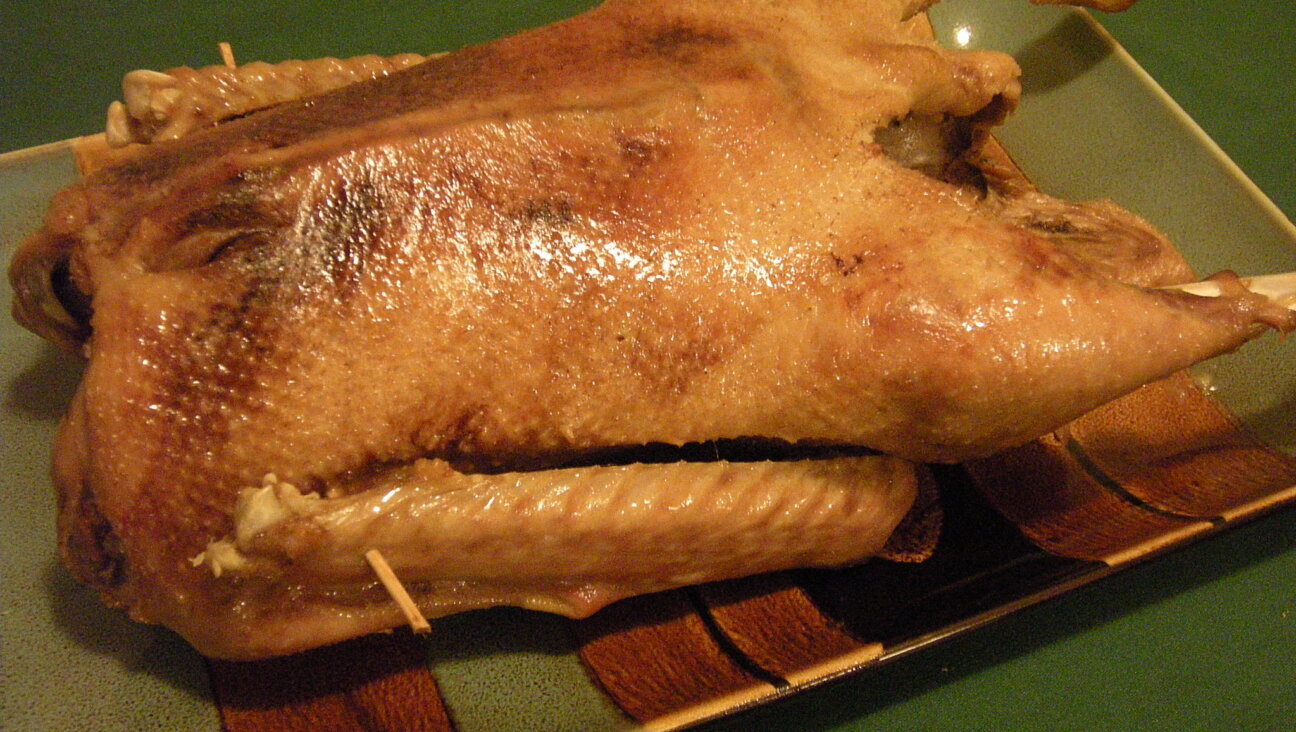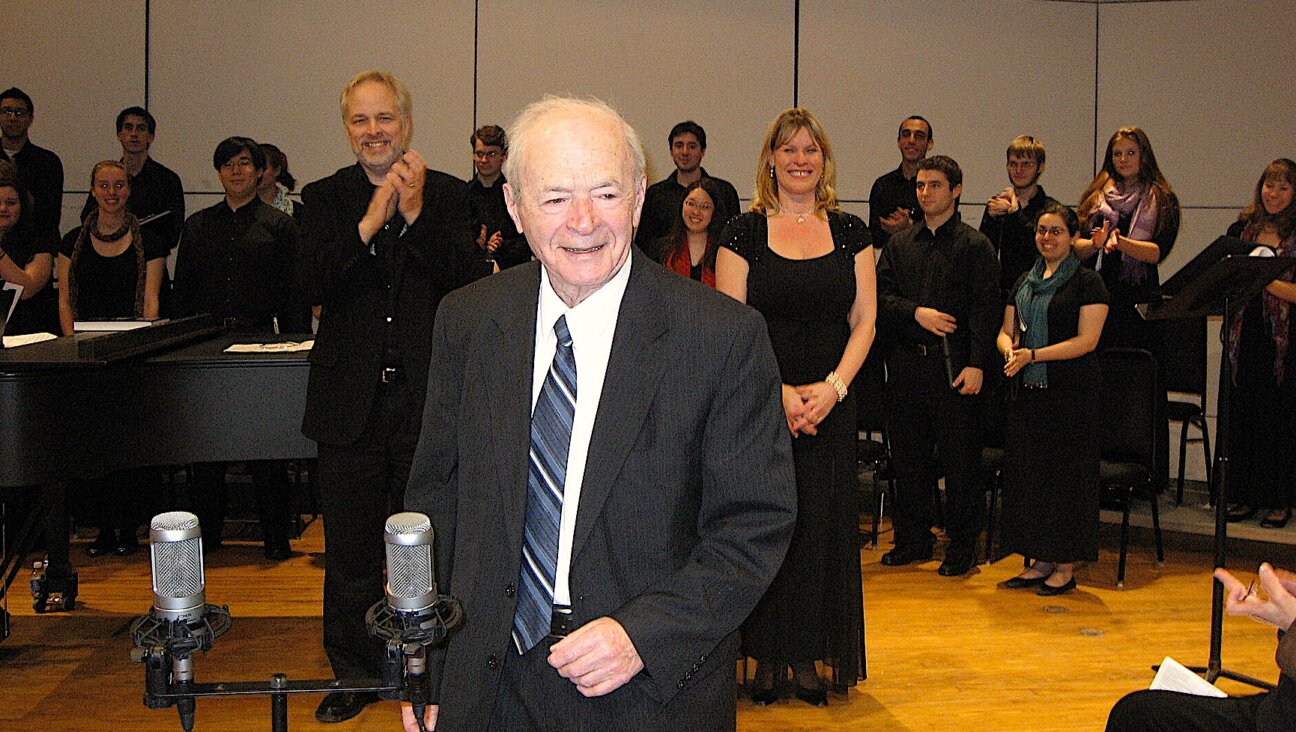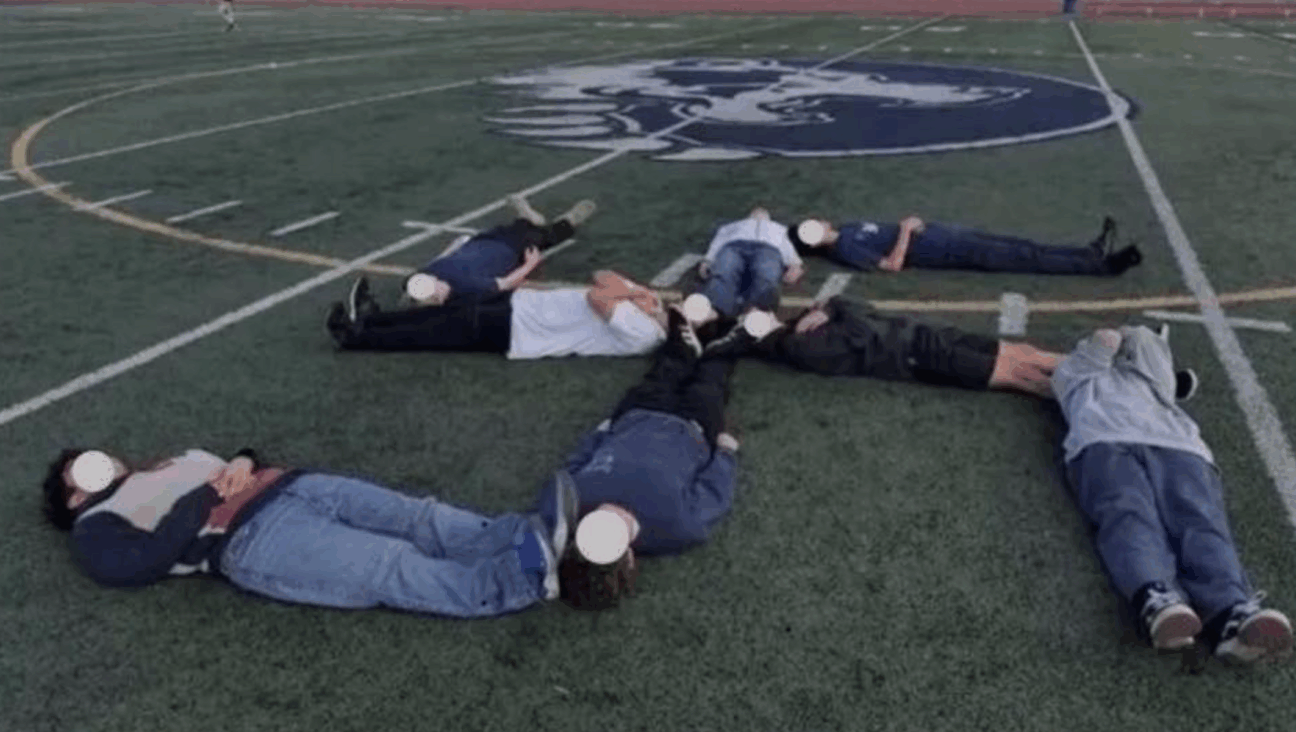A photo of my bubbe when Jewish stores still had Yiddish signs
As far as I know, this photograph is my family’s only physical link to our Yiddish-speaking past
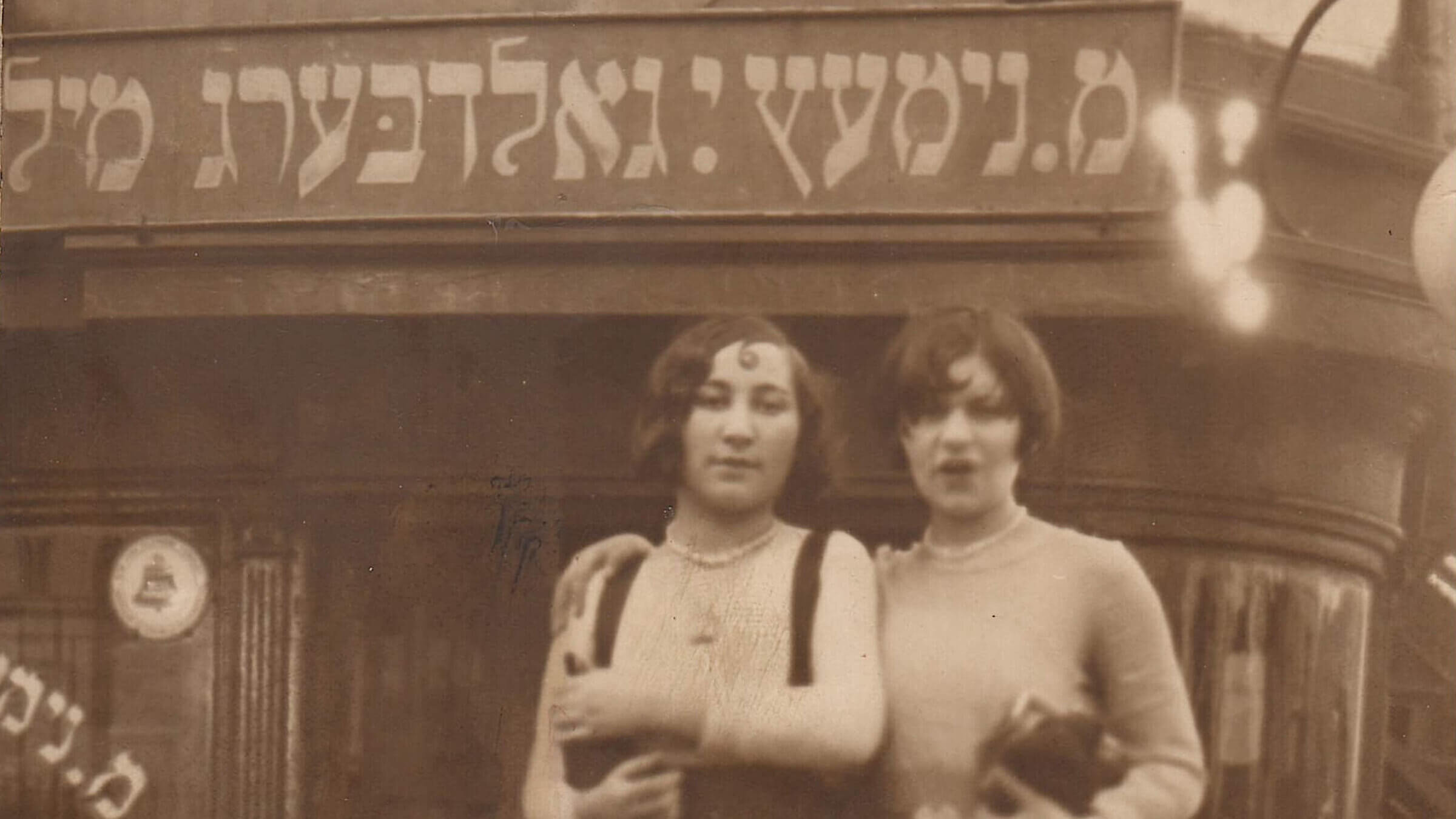
My grandmother Gertrude (left) with her friend, Rose Courtesy of Jennifer A. Stern
This article previously appeared in Yiddish.
Not long ago, I got curious about a box of old family photographs sitting on a shelf in my house. After flipping through a dozen or so pictures of aunts, uncles and cousins, I came across something remarkable: a photo of my paternal grandmother as a very young woman, standing with a friend in front of a store bearing a sign in Yiddish.
All four of my grandparents were born in the Pale of Settlement and were native Yiddish speakers. They emigrated to New York between 1913 and 1923. Throughout their childhood, my parents heard Yiddish constantly, both at home and in the streets of Brooklyn and the Lower East Side. But this photograph is the only physical link I’m aware of to our Yiddish-speaking past.
As a Yiddish student myself, I was enthralled, of course. I quickly realized that the photograph isn’t just fascinating for me and my family. It’s a piece of Jewish history. But I knew almost nothing about it. Where were the two girls standing? When was it taken? I could see that the Yiddish sign said: “M. Nimetz Y. Goldberg,” followed by the letters “mil” — but that didn’t tell me much. There’s nothing written on the back of the photo — no date or inscription.
I felt compelled to find out as much as I could. And thanks to help from friends, I can now tell much of the story behind the picture.
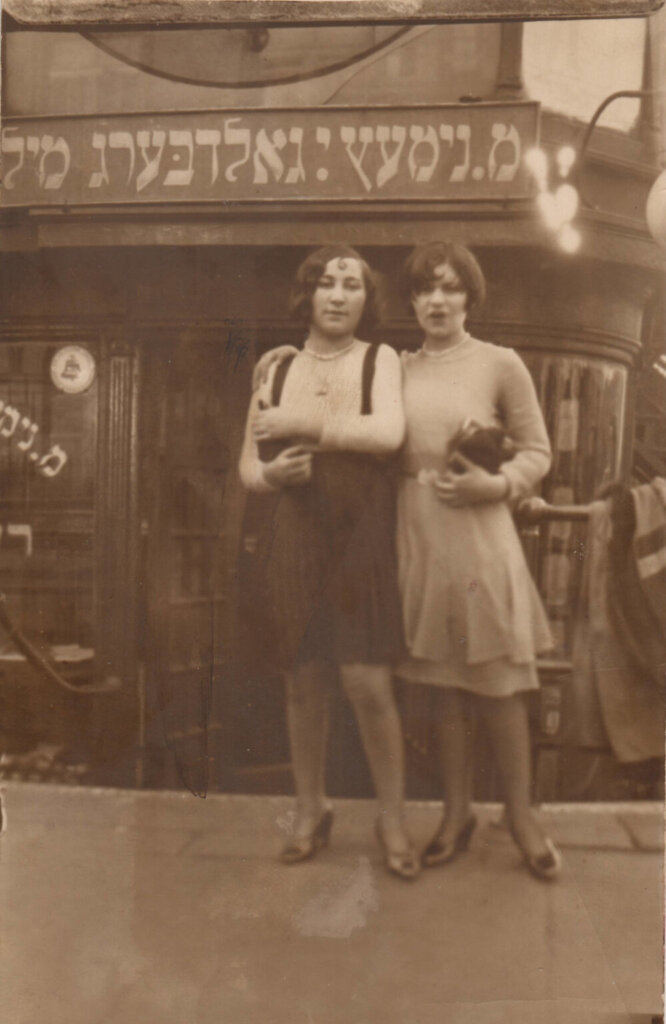
The best clue to the date was my grandmother’s age. According to the few family documents we have, Gertrude Goldfarb (later Stern) was born in Pruzhany, in today’s Belarus, in 1911. She and her friend, who we think was named Rose, look around 20 or 21 in the photo. So it probably dates from ca. 1931-32.
The clothes confirm this dating. Both girls are dressed in the style of around 1930, with very high heels and skirts that end above the knee. Their hair is cut in a fashionable “bob,” and Gertrude has a modish “kiss curl” on her forehead. The small handbags they’re carrying were in vogue at the time.
After Gertrude emigrated to New York in 1923 at age 12, she never returned to Eastern Europe. So the photo must have been taken in New York City. My first guess was the Lower East Side, which turned out to be right. As I finally discovered, the girls are standing in front of Nimetz-Goldberg Dairy Restaurant on the corner of East Broadway and Jefferson Street.
Old New York Yiddish newspapers occasionally featured advertisements for a dairy restaurant owned by Morris Nimetz at 189 East Broadway. This matches the name “M. Nimetz” on the sign, which is also printed on the window (though only the first part is visible). It helps explain the letters “mil” — they’re the beginning of the word “milkhik,” or dairy. The window shows the Hebrew letter “reysh,” the first letter of “restoran” (restaurant). According to old city directories, Morris’s wife Minnie ran a bakery that was probably inside the restaurant. Y. Goldberg became Morris’ partner in 1929 or 1930 — more evidence that our photo is from the early ‘30s.
Ben Katchor, author of a cultural history called The Dairy Restaurant, confirmed in an email that the photograph shows the Nimetz-Goldberg Restaurant. He immediately recognized the sign, and pointed out the stairs leading down to the entrance from the sidewalk — an unusual feature of this particular restaurant. To my pleasant surprise, Katchor added Nimetz-Goldberg, with a link to my Yiddish article, to his website about dairy restaurants in New York and other cities.
As he describes in his book, dairy restaurants were an important part of Jewish life on the Lower East Side before World War II. Many of them, including Nimetz-Goldberg, were kosher. They were a heymish (homey) place to eat familiar milkhik or pareve treats like blintzes, borscht, kreplach, matzo brei and gefilte fish. Dairy restaurants were cheaper than delicatessens with their pricy meat dishes. Minnie Nimetz’s on-site bakery probably offered dessert after the meal.
I don’t know what attracted my grandmother and her friend to this restaurant. Gertrude died in 1987, decades before I discovered the photograph. Maybe they were in the neighborhood for a visit to Seward Park or the Seward Park Library (Gertrude was an avid reader in Yiddish and English). The nearby Educational Alliance offered all kinds of cultural and recreational activities.
It seems, though, that the meal in the dairy restaurant was the high point of the day for these two young women. That’s where they chose to have their photo taken, perhaps by a third friend or a passerby. As mentioned, there’s no writing on the photograph, but the words “post card” are printed on the back. Beginning in 1907, Kodak allowed customers to develop their film as postcards to send through the U.S. mail. Gertrude must have decided to do this. And she still had the postcard among her possessions when she died. It’s now framed in my home — a unique link to my family’s past, and a memory of how two Yiddish-speaking immigrant girls spent their day out.
Postscript
This photograph of my grandmother and her friend has gotten a particularly big reaction from readers. I’ve been thinking about why.
One reason could be that the Yiddish sign is only partly visible. Today a shop sign in Yiddish would be nostalgic and “exotic” — people would carefully take pictures of the whole thing. But in ca. 1931-32, a Yiddish sign was just a normal part of urban life on East Broadway. Seeing only half of it makes the Jewish Lower East Side feel authentic and alive.
The girls’ enjoyment of their physical attractiveness is also a factor. They know they look great in their stylish clothes, and gaze confidently — even provocatively — at the camera. The Yiddish reminds us that Gertrude and Rose were born in traditional Jewish communities in Eastern Europe, where women had limited scope for exploring their sexuality. New York City offered new possibilities, but the girls still ate at a kosher restaurant surrounded by fellow Yiddish-speakers. The photo captures a transitional moment for young, Americanizing Jewish women.
I’d love to hear from readers who reacted strongly to the photo. What strikes you about it? Why do you find it interesting? Email the Yiddish Forward editor Rukhl Schaechter at [email protected]
